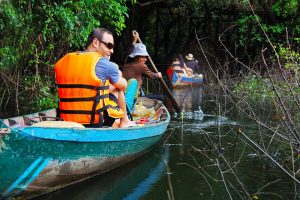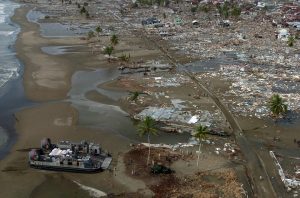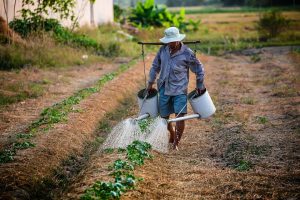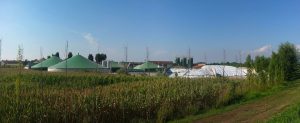Journal Articles: July 2018
Kelliher, F., Reinl, L., Johnson, T. G., & Joppe, M. (2018). The role of trust in building rural tourism micro firm network engagement: A multi-case study. Tourism Management, 68, 1–12.

Abstract
This study examines the role of trust in building rural tourism micro firm network engagement in three case environments in Ireland, Canada and the USA. Researchers have rarely addressed the role of trust in tourism business relationships beyond acknowledging that it is a critical factor in network relationships/exchanges. This study contributes to the existing body of knowledge by exploring the content of member interactions and relationships that lead to trust in rural micro firm tourism networks using a relationship lens underpinned by social exchange theory. Applying a longitudinal interpretivist lens in each case, findings suggest that bonding, bridging and linking interactions have profound implications for rural tourism micro firms who may not have access to a larger social system of stakeholder relationships due to their relatively isolated location. The resultant framework offers insight into the generation of trust as an evolving asset in a rural tourism micro firm network setting.
Chen Yunguang, Park Hyoungsu, Chen Yong, Corcoran Patrick, Cox Daniel, Reimer Jeffrey J., & Weber Bruce. (2018). Integrated Engineering-Economic Model for the Assessment of Regional Economic Vulnerability to Tsunamis. Natural Hazards Review, 19(4), 04018018.

Abstract
The impact of a tsunami can vary greatly across short distances due to differences in topography, building structures, concentration of economic activities in the inundation zone, and economic linkages beyond the inundation zone. This study takes these factors into account in an analysis of a potential tsunami on the West Coast of the United States. An integrated engineering-economic model is proposed that uses detailed information on spatial heterogeneities in flood depth and economic activity by connecting engineering estimates of tax-lot physical damage with economic activity at the sector level. The performance of this new approach, in terms of estimated total losses and the distribution of impacts across sectors, is compared with two prominent alternatives.
Daxini, A., O’Donoghue, C., Ryan, M., Buckley, C., Barnes, A. P., & Daly, K. (2018). Which factors influence farmers’ intentions to adopt nutrient management planning? Journal of Environmental Management, 224, 350–360.

Abstract
The adoption of nutrient management practices can lead to win-win outcomes in terms of both improving productivity and reducing the environmental impact of farming. However, adoption of key practices remains below expectations globally. Few studies specifically focus on the adoption of nutrient management practices and the majority overlook psychological factors in their analysis. This study examines the factors which influence Irish farmers’ intention to apply fertiliser on the basis of soil test results. An expanded version of the theory of planned behaviour is used as a framework for analysis. The influence of policy is also accounted for by this study which requires certain farmers in Ireland to adopt soil testing on a mandatory basis. The results for the national sample (n = 1009) show that attitudes, subjective norms (social pressure), perceived behavioural control (ease/difficulty) and perceived resources are significant and positively associated with farmers’ intentions. In terms of the voluntary sample (n = 587), only attitude, perceived behavioural control and perceived resources are significantly and positively associated with farmers’ intentions. Whereas, for the mandatory sample (n = 422), subjective norms, perceived behavioural control and perceived resources are significantly and correlated in a positive direction with intentions. A number of farm and farmer characteristics are also significantly associated with intentions. Policy recommendations are made based on these results.
De Menna, F., Malagnino, R. A., Vittuari, M., Segrè, A., Molari, G., Deligios, P. A., … Ledda, L. (2018). Optimization of agricultural biogas supply chains using artichoke byproducts in existing plants. Agricultural Systems, 165, 137–146.

Abstract
The development of biogas production exacerbated the competition for land availability between crops dedicated to human consumption and those intended for energy production. Residual biomasses have been often proposed for their positive outcomes in terms of reduced pressure on land use. However, literature did not assess optimization options for existing biogas plants feeding. This paper developed a bio-economic model for the optimization of agricultural biogas supply chains using artichoke byproducts in existing plants. A multiple goal linear programming approach was adopted, using two objective functions, calculating respectively net present value and land use from energy crops, associated to a regional biogas network. Three scenarios were defined using primary and secondary data on the residues of a specific artichoke variety – globe – and an Italian region – Sardinia. In the Business As Usual scenario, net present value is about 7 million € with a land use of about 2720 ha. When using artichoke residues, the economic impact increases by 28% and land use is reduced by 83% if net present value is optimized. When land use is optimized, the economic impact still grows by 25% and land use is reduced by 100%. Results from this study confirm that, under certain conditions, locally available residual biomasses can replace energy crops in existing biogas networks, coupling viability and sustainability.
Kosny, A., Lifshen, M., Yanar, B., Tonima, S., MacEachen, E., Furlan, A., … Neis, B. (2018). The Role of Healthcare Providers in Return to Work. International Journal of Disability Management, 13.

Abstract
International research has generated strong evidence that healthcare providers (HCPs) play a key role in the return to work (RTW) process. However, pressure on consultation time, administrative challenges and limited knowledge about a patient’s workplace can thwart meaningful engagement. Aim: Our study sought to understand how HCPs interact with workers compensation boards (WCBs), manage the treatment of workers compensation patients and navigate the RTW process. Method: The study involved in-depth interviews with 97 HCPs in British Columbia, Manitoba, Ontario and Newfoundland and Labrador and interviews with 34 case managers (CMs). An inductive, constant comparative analysis was employed to develop key themes. Findings: Most HCPs did not encounter significant problems with the workers compensation system or the RTW process when they treated patients who had visible, acute, physical injuries, but faced challenges when they encountered patients with multiple injuries, gradual-onset or complex illnesses, chronic pain and mental health conditions. In these circumstances, many experienced the workers compensation system as opaque and confusing. A number of systemic, process and administrative hurdles, disagreements about medical decisions and lack of role clarity impeded the meaningful engagement of HCPs in RTW. In turn, this has resulted in challenges for injured workers (IWs), as well as inefficiencies in the workers compensation system. Conclusion: This study raises questions about the appropriate role of HCPs in the RTW process. We offer suggestions about practices and policies that can clarify the role of HCPs and make workers compensation systems easier to navigate for all stakeholders.
Kulig, J. C., Townshend, I., Kosteniuk, J., Karunanayake, C., Labrecque, M. E., & MacLeod, M. L. P. (2018). Perceptions of sense of community and community engagement among rural nurses: Results of a national survey. International Journal of Nursing Studies.

Abstract
Background. Variations in rural nurses’ sense of community and engagement in rural communities are poorly understood, although there is evidence that these are linked to community cohesion and perceived community resilience.
Objective. The aim of our research was to develop descriptive profiles of rural nurses who exhibit a sense of community and community engagement at low, average, and high levels, based on occupational, personal, community, and regional characteristics. These results were linked to levels of cohesion and resilience.
Design. A survey questionnaire, including established scales, demographic information, and information about rural nursing practice was administered to rural nurses.
Settings. Rural communities in all provinces and territories in Canada outside the commuting zone of urban areas with 10,000 or more inhabitants.
Participants. Multi-level systematic stratified sampling was employed for the national survey. A subsample of 2116 Registered Nurses, Nurse Practitioners, and Licensed Practical Nurses comprised the participants for this analysis.
Methods. The analysis was conducted in two stages: 1) in the first subset, those (n = 2116) whose primary work community was rural, remote, or rurban with less than 10,000 inhabitants were grouped into a nine-group typology based on low, average, and high tertiles of Psychological Sense of Community and Community Engagement. The second subset (n = 993) represented those in three groups: low-low, average-average, and high-high scores on the two indices. Significant differences between the three groups were identified based on occupational, personal, community, and regional characteristics. Chi Square, ANOVA, and correlation tests were applied as required.
Results. Nurses with low scores on both Psychological Sense of Community and Community Engagement were more likely to be from larger communities, single or divorced and living and working in the North. Those with average scores on both scales have been in their nursing positions for more than 20 years, are middle aged and are satisfied with their home community. Nurses in the third group have high scores on both indicators; they are more likely to be from a smaller childhood community, married or living common-law, and are in the late middle age group.
Conclusions. By focusing on the key variables or traits of nurses, modifiable recruitment and retention practices can be implemented. For example, it is important to recruit nurses who are from smaller communities. Other initiatives for nurses include matching community activities with the age and stage of the family and developing a welcoming strategy for the workplace and community for newly arrived nurses.
Micha, E., Roberts, W., Ryan, M., O’Donoghue, C., & Daly, K. (2018). A participatory approach for comparing stakeholders’ evaluation of P loss mitigation options in a high ecological status river catchment. Environmental Science & Policy, 84, 41–51.

Abstract
Phosphorus (P) transfer from land to water is a source of diffuse pollution that contributes to the decline in ecological status of river bodies in the European Union. The Water Framework Directive (2000/60/EC) provides for the protection of water bodies that represent pristine or near-pristine condition, classified as high ecological status through the adoption of an agri-environmental decision-making process that promotes stakeholder participation. However, successful implementation of agri-environmental policies can prove challenging when faced with uncertainties and diverging opinions due to the variety of actors involved. This study adopted a participatory approach including stakeholders with conflicting interests in the selection of P transfer mitigation policies. Fifteen P transfer mitigation options were shortlisted based on agronomic and environmental data from a case-study agricultural catchment and presented to a group of experts and farmers. Results showed significant disparities between perceived effectiveness by farmers and experts groups, with experts prioritizing problems related to connectivity issues, while farmers to soil compaction and erosion. In addition, measured agronomic and environmental variables were used to model effectiveness from a decision support tool (FARMSCOPER) and compared with stakeholder groups’ perceived effectiveness. This approach combined the scientific research with the empirical knowledge of farmers and the modelling of quantified field and farm data. This study showed that stakeholders are diverse, and perceive effectiveness based on group-specific operational and social factors. Experts identified effectiveness at catchment scale, whilst farmers identified field scale effectiveness. For decision support tools and simulation models to be beneficial for policy makers, they need to be calibrated to local conditions and farm typologies to select the right measure at farm scale. The study recommends improved knowledge transfer between interested actors and the need for integration of conflicting opinions in policy design. A bottom-up approach to decision making is suggested, to assist in the decentralization of the procedures towards more effectively implemented P transfer mitigation policies.
O’Donoghue, C., Chyzheuskaya, A., Grealis, E., Finnegan, W., Goggin, J., Hynes, S., … Ryan, M. (2018). Measuring GHG Emissions Across the Agri-Food Sector Value Chain: The Development of BIO – a Bio-economy Input-Output Model. Proceedings in Food System Dynamics, 0(0), 38–69.

Abstract
Sustainable intensification is one of the greatest challenges facing the agri-food sector which needs to produce more food to meet increasing global demand, while minimizing negative environmental impacts such as agricultural greenhouse gas (GHG) emissions. Sustainable intensification relates not just to primary production, but also has wider value chain implications. An input-output model is a modelling framework which contains the flows across a value chain within a country. Input-output (IO) models have been disaggregated to have finer granular detail in relation to agricultural sub-sectoral value chains. National IO models with limited agricultural disaggregation have been developed to look at carbon footprints and within agriculture to look at the carbon footprint of specific value chains. In this paper we adapt an agriculturally disaggregated IO model to analyze the source of emissions in different components of agri-food value chains. We focus on Ireland, where emissions from agriculture comprise nearly 30% of national emissions and where there has been a major expansion and transformation in agriculture since the abolition of milk quota restrictions. In a substantial Annex to this paper, we describe the modelling assumptions made in developing this model. Breaking up the value chain into components, we find that most value is generated at the processing stage of the value chain, with greater processing value in more sophisticated value chains such as dairy processing. On the other hand, emissions are in general highest in primary production, albeit emissions from purchased animal feed being higher for poultry than for other value chains, given the lower direct emissions from poultry than from ruminants or sheep. The analysis highlights that emissions per unit of output are much higher for beef and sheep meat value chains than for pig and poultry meat value chains.
